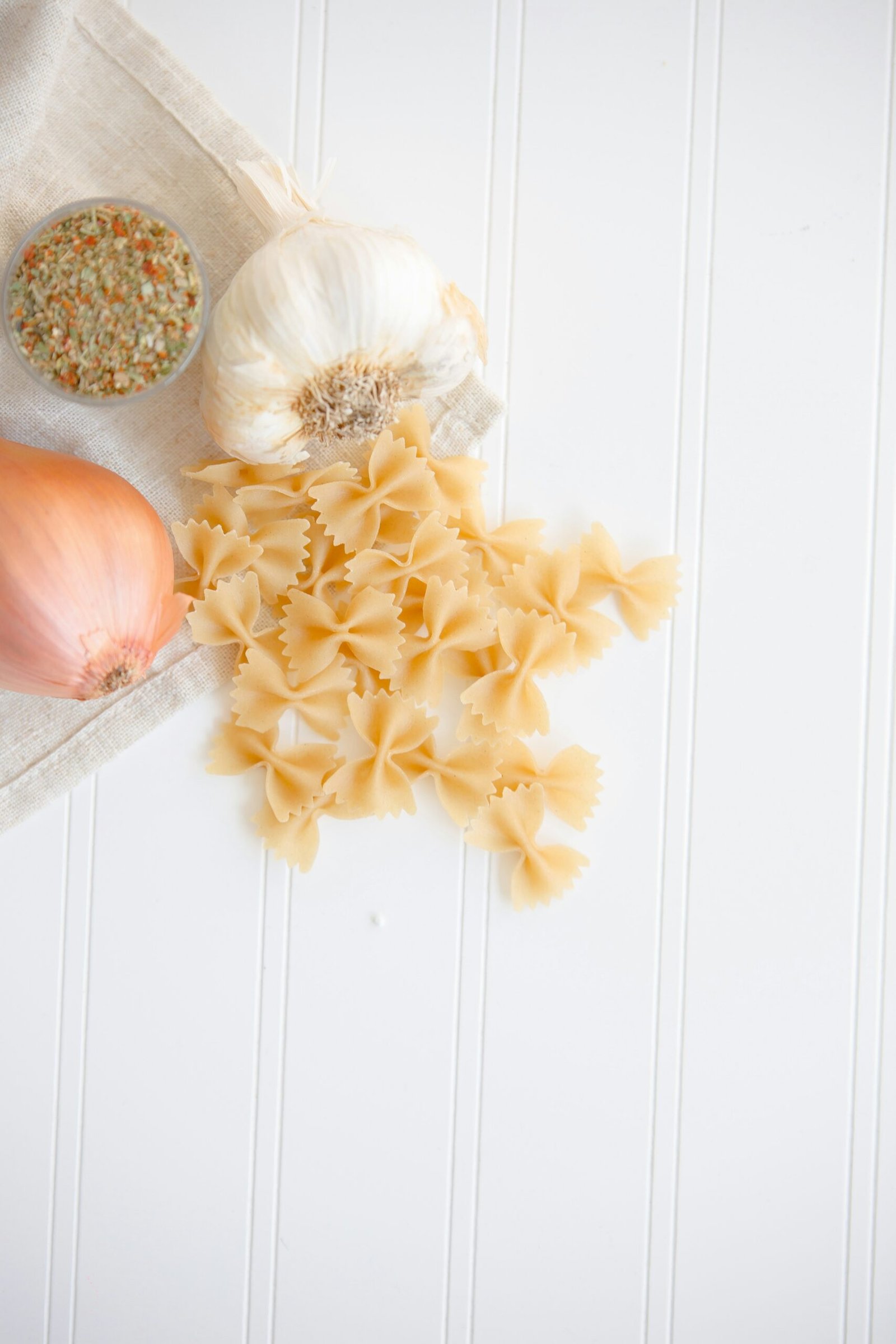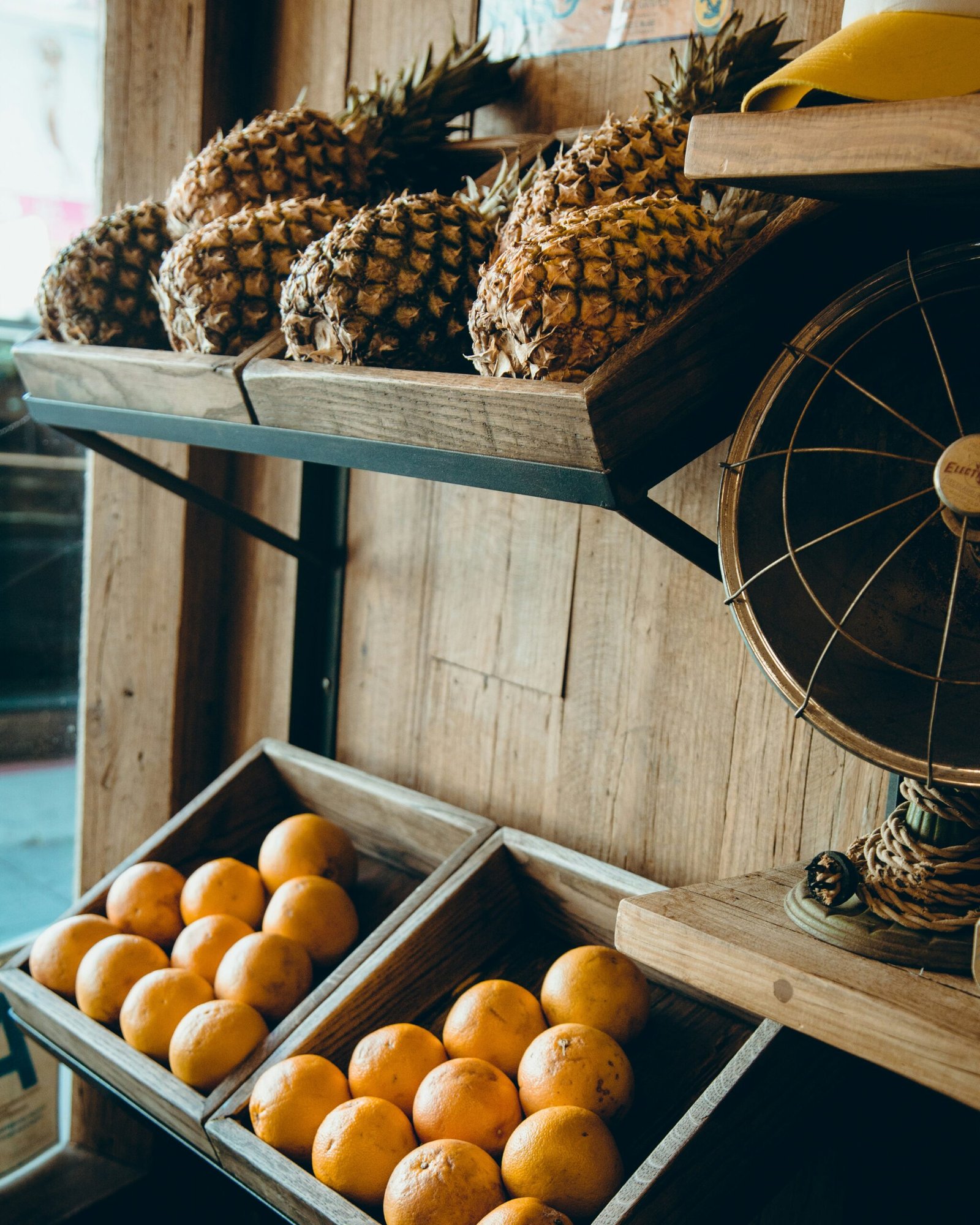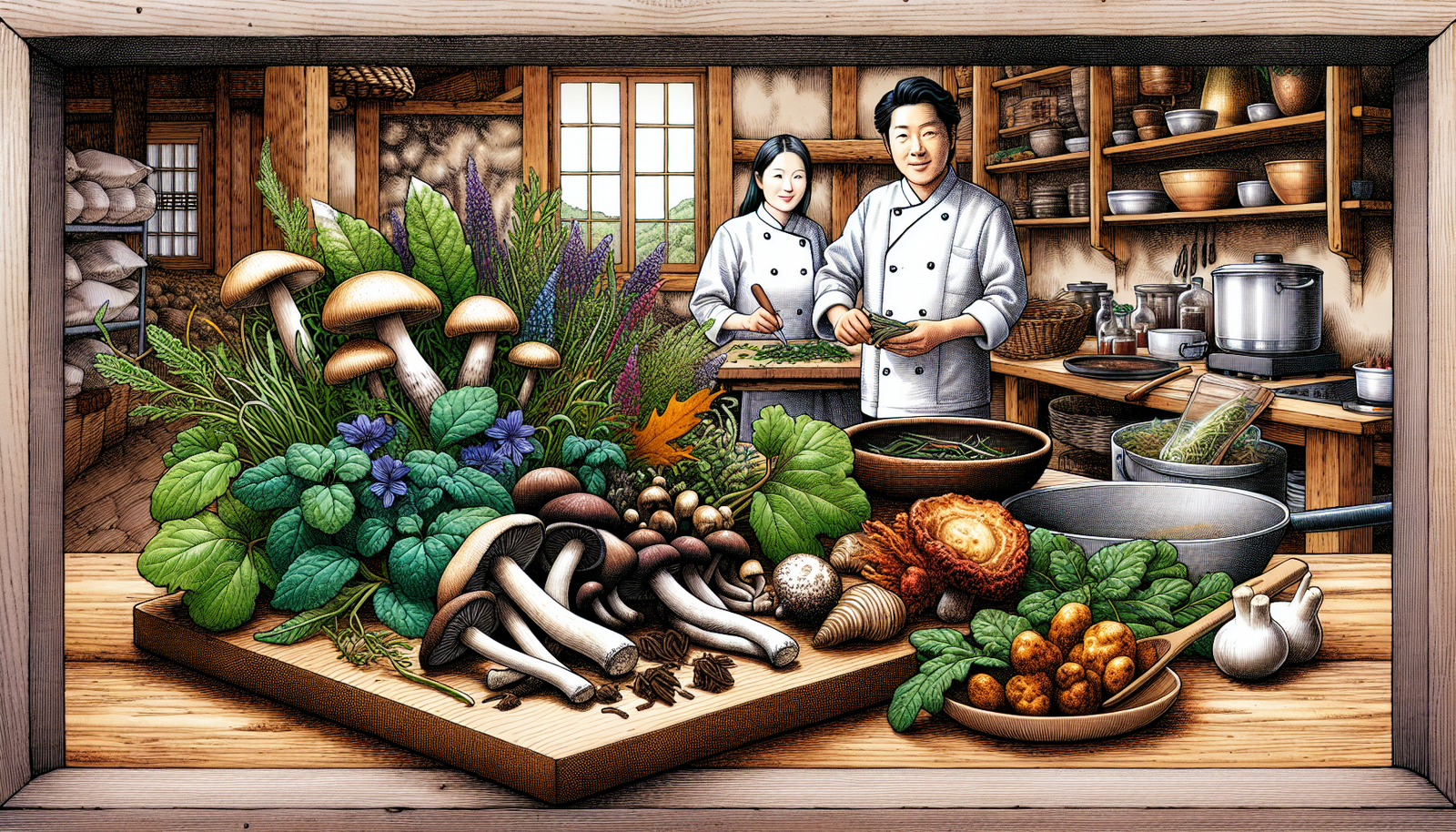Have you ever wondered how chefs are incorporating foraged ingredients into traditional Korean dishes? Whether it’s bringing a unique twist to classic recipes or discovering new flavors from the wild, the use of foraged ingredients has become a growing trend in Korean cuisine. From the earthy aroma of wild mushrooms to the delicate sweetness of wild plants, these unconventional ingredients add a touch of adventure and a deeper connection to nature to every plate. In this article, we will explore the innovative ways chefs are embracing foraged ingredients and how they are transforming the culinary landscape of Korean cuisine. Get ready to embark on a flavorful journey like no other!
Traditional Korean Dishes
Korean cuisine is known for its bold flavors, unique ingredients, and intricate cooking techniques. Many traditional Korean dishes are deeply rooted in the use of foraged ingredients, showcasing the deep connection between nature and food in Korean culture. From wild herbs and mushrooms to coastal plants and freshwater seafood, foraging plays a vital role in the creation of traditional Korean dishes.
Classic Korean Foraged Ingredients
One of the key elements of traditional Korean cuisine is the use of locally sourced foraged ingredients. These ingredients vary based on the region and season, but some classics can be found throughout the country. Wild greens such as dandelion leaves and aster scaber are commonly used in various dishes, providing a refreshing and slightly bitter taste. Fernbrake, a type of edible fern, is another beloved foraged ingredient that adds a unique texture to numerous Korean dishes.
Role of Foraged Ingredients in Traditional Korean Dishes
Foraged ingredients are not only an essential part of Korean cuisine due to their unique flavors and textures but also because they bring a sense of heritage and connection to the land. Traditional Korean dishes often showcase the abundant variety of foraged ingredients, making use of their natural flavors to create balanced and harmonious flavors. These ingredients also reflect the deep appreciation Koreans have for the environment and the sustainable practices that have been passed down through generations.
Discovering Foraged Ingredients
To understand the significance of foraged ingredients in Korean cuisine, one must explore the process of discovering and utilizing these hidden treasures.
Exploring Local Flora and Fauna
Foraging starts with a deep knowledge of the local flora and fauna. Korean chefs and home cooks have mastered the art of identifying wild plants, mushrooms, and seafood that are safe to consume. They spend time wandering the hills, forests, and coastal areas, gathering various ingredients along the way. This close connection to nature allows them to discover the hidden gems that enhance the flavors of Korean dishes.
Learning from Traditional Practices
The knowledge and techniques surrounding foraging in Korea have been passed down through generations, preserving the rich culinary traditions. Traditional practices involve learning from experienced elders who have a deep understanding of the local environment and the edible treasures it holds. Through their guidance, aspiring chefs and home cooks can learn about the specific times of the year when certain ingredients are at their best and the different ways to incorporate them into dishes.

Techniques for Incorporating Foraged Ingredients
Once foraged ingredients have been discovered, chefs employ a range of techniques to incorporate them into traditional Korean dishes.
Fermentation
Fermentation is a technique deeply ingrained in Korean culinary traditions, and foraged ingredients are often used in this process. Ingredients such as wild garlic, wild chives, and acorn jelly are pickled and fermented to develop complex flavors. Familiar dishes such as kimchi and doenjang, a traditional Korean soybean paste, incorporate foraged ingredients and are transformed through the fermentation process.
Pickling
Pickling is another popular preservation technique that allows for the long-term use of foraged ingredients. Nasturtium leaves, for instance, can be pickled and added to bibimbap, a classic Korean rice dish. The pickling process not only adds a tangy and vibrant element to the dish but also ensures the availability of the ingredient throughout the year.
Infusion
Infusing foraged ingredients into various liquids, such as oils and vinegars, is a way to capture their essence and incorporate them into a variety of dishes. For example, pine needles can be infused in oil and used to season seafood dishes, imparting a subtle yet distinctive flavor. This technique allows chefs to introduce the unique qualities of foraged ingredients into their culinary creations.
Smoking
Smoking is a technique that adds complexity and depth to ingredients, and foraged herbs and mushrooms are no exception. By smoking mushrooms like oak mushrooms or wild bolete, chefs can enhance their natural flavors and create a smoky undertone that adds a whole new dimension to Korean dishes.
Seasoning and Garnishing
Foraged ingredients are often used as seasoning or garnishing elements in traditional Korean dishes. Wild sesame leaves, kochia leaves, and mugwort are just a few examples of foraged herbs that provide aromatic flavors and vibrant colors to dishes, elevating their overall appearance and taste.
Innovative Culinary Creations
While foraged ingredients have a long history in traditional Korean cuisine, they are not limited to these age-old recipes alone. Chefs in Korea are continuously pushing the boundaries and incorporating foraged ingredients into modern culinary creations.
Fusion of Traditional and Modern Techniques
Innovative Korean chefs are finding ways to combine traditional cooking techniques with contemporary methods to create unique dishes that showcase foraged ingredients. By using modern cooking equipment and experimenting with new flavor combinations, they are able to breathe new life into traditional recipes, appealing to a wider range of palates.
Foraged Ingredients in Contemporary Korean Cuisine
Contemporary Korean cuisine embraces the use of foraged ingredients and seeks to highlight their natural flavors and textures. Chefs are incorporating unique elements such as wild mushrooms or coastal greens into modern dishes, giving them a distinct taste that sets them apart from traditional preparations.
Creative Presentation of Foraged Ingredients
Chefs are not only focusing on the flavors and textures of foraged ingredients but also their visual appeal. Creative presentation techniques, such as edible flowers and artistic plating, are becoming increasingly popular in Korean cuisine. Foraged ingredients such as perilla flowers or elderflowers are used to add a touch of beauty to the plate, enhancing the overall dining experience.

Sustainability and Ethical Foraging
Incorporating foraged ingredients into Korean cuisine goes hand in hand with sustainable and ethical practices, both of which are highly valued in Korean society.
Importance of Sustainable Foraging
Sustainable foraging is crucial in order to maintain the delicate balance of ecosystems and ensure the availability of foraged ingredients for future generations. By respecting the natural environment and only harvesting what is needed, chefs can contribute to the preservation of biodiversity and help protect delicate ecosystems.
Preserving Ecosystems and Biodiversity
Foraging is deeply rooted in Korean culture and has been practiced for centuries. By incorporating foraged ingredients into their dishes, chefs honor this tradition and help preserve the natural diversity of the region. By showcasing the unique qualities of foraged ingredients, they also raise awareness about the importance of protecting the environment.
Community Engagement and Responsibly Sourcing
Many Korean chefs actively engage with local communities and small-scale farmers who specialize in foraged ingredients. By sourcing directly from these individuals, chefs not only support local economies but also foster a sense of community. Additionally, by responsibly sourcing foraged ingredients, chefs ensure the continued availability of these resources while promoting ethical and sustainable practices.
Influence of Regional Diversity
While foraged ingredients are a common feature in Korean cuisine, their specific varieties and uses can vary across different regions of the country.
Different Foraged Ingredients Across Regions
From the mountainous regions of Gangwon Province to the coastal areas of Jeolla Province, the diversity of Korea’s landscape is reflected in its foraged ingredients. Each region boasts its own unique array of flavors, with ingredients like pine mushrooms, bamboo shoots, and seaside greens appearing in dishes based on the availability of local resources.
Regional Variation in Preparation and Cooking Techniques
Regional variation is not limited to the ingredients themselves but extends to the preparation and cooking techniques employed. Chefs in each region have developed their own methods for showcasing foraged ingredients while preserving their natural flavors. These regional differences contribute to the vibrant tapestry of Korean cuisine, offering a rich cultural experience for both locals and visitors.

Infusing Foraged Ingredients into Staple Dishes
Foraged ingredients have found their way into staple Korean dishes, adding a layer of complexity and depth to traditional recipes.
Foraged Ingredients in Banchan
Banchan, or side dishes, play a significant role in Korean meals, and foraged ingredients are often featured in these small, flavorful dishes. Wild-grown greens, including crown daisies and chicory, are frequently used to create a variety of banchan, offering a balance of flavors and textures alongside main courses.
Foraging-Inspired Kimchi Variations
Kimchi, Korea’s iconic fermented vegetable dish, can also be enhanced with foraged ingredients. Chefs are experimenting with unique kimchi variations, adding twists to traditional recipes by incorporating wild onions, wild chives, or radish leaves. These foraging-inspired kimchi variations offer a new level of complexity and depth to this beloved Korean staple.
Foraged Ingredients in Soups and Stews
Soups and stews are an integral part of Korean cuisine, and foraged ingredients find their way into these comforting dishes. For example, wild sesame leaves or mugwort are added to soups to infuse them with their distinctive flavors, while mushrooms such as pine mushrooms or oak mushrooms add earthiness and richness to stews.
Foraged Herbs in Meat and Seafood Dishes
Foraged herbs play a crucial role in adding depth and flavor to meat and seafood dishes. Herbs like Korean wild thyme or wild fennel are often used to season grilled meats, imparting a fresh and aromatic quality. Seafood dishes, on the other hand, may incorporate coastal foraged greens, such as sea aster or coastal sandweed, to provide a hint of brininess.
Foraging as a Culinary Trend
As people become increasingly mindful of sustainability and the importance of connecting with nature, foraging has emerged as a popular culinary trend in Korea.
Growing Popularity of Foraging
Foraging has gained significant attention in recent years as people seek a closer connection to the food they consume and a deeper appreciation for nature’s offerings. The act of foraging allows individuals to not only discover unique and flavorful ingredients but also reconnect with the natural world, fostering a sense of gratitude and respect for the environment.
Foraging as a Source of Innovation and Creativity
Foraging has become a source of inspiration for chefs, leading to innovative and creative culinary creations. By incorporating foraged ingredients into their dishes, chefs are able to experiment with new flavors and textures, pushing the boundaries of traditional Korean cuisine. This creativity and innovation have helped forge a path towards a more sustainable and environmentally conscious gastronomy.

Challenges and Opportunities
While foraging offers numerous benefits, there are also challenges that need to be addressed to ensure the sustainable integration of foraged ingredients into Korean cuisine.
Seasonality and Availability
One of the challenges of using foraged ingredients is the issue of seasonality and availability. Some ingredients may only be available during specific times of the year, making it challenging for chefs to consistently incorporate them into their menus. However, this limitation also presents an opportunity for creativity, as chefs can explore alternative ingredients and find new ways to showcase their flavors.
Safety and Proper Identification
Another challenge is the safety and proper identification of foraged ingredients. It requires extensive knowledge and experience to accurately identify edible plants, mushrooms, and seafood. Chefs must ensure that they are sourcing their foraged ingredients from reliable sources and practice responsible foraging to guarantee the safety of their dishes.
Education and Training on Foraging
To address these challenges, education and training on foraging are essential. Culinary schools, workshops, and mentorship programs can play a crucial role in equipping aspiring chefs with the knowledge and skills necessary to responsibly incorporate foraged ingredients into their culinary practices. Furthermore, fostering a culture of information sharing and collaboration within the culinary community can help promote best practices in foraging.
The Future of Foraged Ingredients in Korean Cuisine
As awareness of sustainability and appreciation for local ingredients continue to grow, the future of foraged ingredients in Korean cuisine looks promising.
Integration of Foraged Ingredients in Mainstream Dining Scene
Foraged ingredients are gradually making their way into the mainstream dining scene in Korea. As more chefs embrace the use of these unique ingredients, diners are exposed to a wider variety of flavors and experiences. This integration provides an opportunity for culinary traditions to evolve and adapt while keeping their roots in foraging practices.
Emerging Trends and Techniques
Innovation is a constant driving force in the culinary world, and foraging offers an exciting avenue for exploration. Chefs are continually discovering new herbs, plants, and mushrooms that can be incorporated into their dishes, leading to the emergence of new flavors and techniques. As these trends and techniques take hold, they contribute to the overall evolution and growth of Korean cuisine.
In conclusion, foraged ingredients have a profound impact on Korean cuisine, not only enhancing the flavors and textures of traditional dishes but also fostering a deeper connection with nature and promoting sustainable practices. Through a combination of traditional knowledge, innovative techniques, and a commitment to ethical sourcing, Korean chefs are integrating foraged ingredients into their culinary creations, shaping the future of Korean cuisine and offering a truly unique dining experience.

